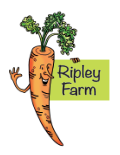Our Four Best Tips For a Successful Gardening Season No Matter What
Do you have plans to do a garden this year?
I imagine that your memories of last year's gardening season are still in your mind as you plan for another year.
With record rainfall in 2023, I have heard from so many home gardeners (and farmers) that it was a hard garden year with big disappointments.
And as you well know, gardening is hard work. It's one of the most satisfying things you do, and at the same time, one of the most challenging.
Did your cucumber seedlings die?
Did you have to replant four times?
Did the weeds take over everything?
As we all learned from last year, it is frustrating when you don't get what you want from your hard work.
That's why it's important to maximize your efforts when you garden, right?
While we can't be in control of the weather, of course, there are some great ways you can put yourself in the best position to get what you want out of your garden!
To help you along your way, here are our best four tips for a successful gardening year no matter what the weather throws at you this year!

Our four best tips for a successful gardening season no matter what
Tip #1: Plant at the right time
This is a huge one! So if you're like me, you're super excited to “put in your garden” as soon as possible. Those little plants pushing up out of the earth bring so much hope and joy to my life, as I'm sure they do for you, too!
That being said, I strongly suggest that you resist the urge to plant too soon.
While there are beautiful warm, dry sunny days that inspire us all to buy those tomato plants at the box stores and put them in in early May, please remember that Maine's spring weather is notoriously fickle. Not every day, but it is cold, wet, and frosts come even as late as the end of May or early June. And those are the moments that kill your tender plants and produce disappointments.
Based on our own farm's 15 seasons of experience in Dover Foxcroft, I created this basic planting chart for safe planting dates for you!
Follow it and you will only have to plant once!
| Vegetable |
Direct seed (DS) or transplant (TP)? |
Suggested planting dates |
|---|---|---|
| Basil | TP | June 1-July 1 |
|
beans |
DS | June 1-July 15 |
| beets | DS | May 20-July 15 |
| Bok choy | TP | May 20-Aug 15 |
| broccoli | TP |
May 20-July 15 |
| cabbage | TP | May 20-July 1 |
| carrots | DS | May 10-July 1 |
| cauliflower | TP | May 20-July 1 |
| cilantro | DS | May 20-August 1 |
| collard greens | TP | May 20-August 1 |
| cucumbers | TP or DS | June 1-July 1 |
| eggplant | TP | June 1 |
| kale | TP | May 20-August 1 |
| kohlrabi | TP | May 20-July 1 |
| lettuce | TP | May 20-Sept 1 |
| peppers | TP | June 1 |
| spinach | TP | May 20-August 1 |
|
summer squash/Zucchini/Winter Squash |
TP or DS | June 1 |
| Tomatoes | TP | June 1 |
For more info, check out this link to the UMaine Extension’s planting chart.
Tip #2: Give your plants enough room
Another big one!
I am very guilty of this one, even as lately as last year!
True story:
In my home garden, we put in 6 cherry tomato plants, as we do every year. And those plants need a lot of space. I know from experience.
But, being optimistic, I thought it wouldn't hurt to put some Swiss chard plants right on the edge of the bed while the cherry tomatoes were small. And it didn't hurt the cherry tomatoes... but they grew so large that even with support they sprawled on TOP of the Swiss chard, not only eliminating my ability to harvest them, but also killing the plants.
Moral of the story? Just give your plants enough space. Less really is more in terms of gardening effort!
In the early part of the season it's easy to want to cram the plants in since it looks like a lot of space when you're planting, but later it gets too crowded and stresses the plants out, lowering yield and/or making the plants more susceptible to deficiencies, diseases, and/or pests.
Based on our own farm's 15 seasons of experience in Dover Foxcroft, I created this basic plant spacing chart for you! Check it out and your plants will grow in style!
| vegetable |
plant spacing recommended |
notes |
|---|---|---|
| basil | plant 12" apart | pick regularly to prevent flowering |
| beans/peas | thin to plants 2-4" apart | |
| beets | thin to plants 3-4" apart | |
| bok choy | plant 8" apart for medium heads | |
| broccoli | plant 10-12" apart | |
| cabbage | plant 12" apart | |
| carrots | thin to plants 1-2" apart | |
| cauliflower | plant 12-16" apart | |
| cilantro | thin to plants 4-6" apart | |
| collard greens | plant 12" apart | plant closer if you want to cut and come again smaller leaves |
| cucumbers | plant in hills of 2-3 plants, 36-48" apart | |
| eggplant | plant 12" apart | |
| kale/Swiss chard | plant 12" apart for full size leaves for bunching | plant closer if you want to cut and come again smaller leaves |
| kohlrabi | plant 8" apart | |
| lettuce | plant 8-12" apart for full size heads | plant closer if you want to cut and come again smaller leaves |
| peppers | plant 12" apart | |
| spinach | plants 6-8" apart | |
|
summer squash/ zucchini/winter squash |
plant in hills of 2-3 plants, 48" apart | |
| tomatoes | plant 24" apart | provide support |
For more info, check out this link to the UMaine Extension’s planting chart.
Tip #3: Plant what you can take care of
Again born out of good intentions and enthusiasm for gardening and springtime, we are all tempted to plant a huge garden. Optimism reigns on that warm spring day that you're out there with seeds/plants, tools, watering cans, and fresh dirt. I totally get it!
And that's why I hope you'll remember this blog post at that time.
Ask yourself as you plan your garden, what can you realistically take care of or want to take care of?
Gardening is a lot of work and often less is more. Planting too much that you take care of poorly can very often result in LESS harvest than planting less that you take good care of.
Even if what you can do is a couple of pots or buckets on your porch! It's so much more satisfying to look at a small tidy plot than a too big space overrun with weeds to the point you can't see your food!
And equally valid, realizing if you can't spare the time, give yourself the option to skip a garden this year!
Tip #4: Plant things you like to eat
Our last key to success is to plant things you like to eat. Which may seem like a no brainer, but when you go out to your garden, it's the most satisfying and successful feeling when you actually USE things from it.
Know the feeling of harvesting a bowl of fresh, warm, perfectly ripe cherry tomatoes for a salad? Or gathering fresh cut herbs for a soup?
Focusing on your favorite things in your garden with your limited time yields the most satisfaction for your efforts!



Add new comment